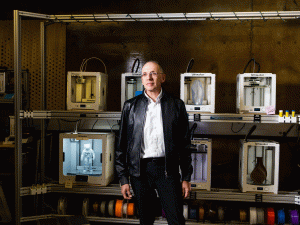

Research Bio
Costas J. Spanos' current research interests include the application of statistical analysis in the design and fabrication of integrated circuits, and the development and deployment of novel sensors and computer-aided techniques in semiconductor manufacturing. He is also working towards the deployment of statistical data mining techniques for energy efficiency applications, and is the Principal Investigator of the Singapore based SinBerBEST project, focusing on energy efficient buildings. In 2000 he was elected Fellow of the Institute of Electrical and Electronic Engineers for contributions and leadership in semiconductor manufacturing, and in 2009 he was appointed in the Andrew S. Grove Distinguished Professorship, in the Department of Electrical Engineering and Computer Sciences.
Research Expertise and Interest
integrated circuits, solid-state devices, sensors, semiconductor manufacturing, energy efficiency, smart buildings
In the News
Hybrid Cooling Leads to Significant Energy Savings in Tropical Office Buildings
Energy-Saving AI Is Coming for Your Office Thermostat - Hand Over the Controls to AI
COVID-19 first target of new AI research consortium
Costas Spanos Appointed New CITRIS Director
Costas Spanos, the Andrew S. Grove Professor and Chair of Electrical Engineering and Computer Sciences, will become the fourth Director of CITRIS (the Center for Information Technology Research in the Interest of Society).




